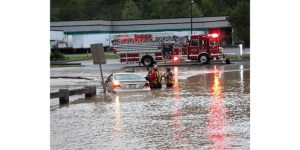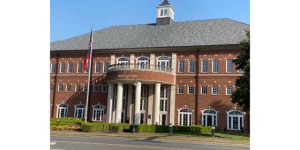Air pollution no longer just Atlanta’s problem
Published 8:22 am Monday, April 10, 2006
ATLANTA — Environmental groups last week chose a bustling midtown Atlanta office to unveil their united effort to clean up Georgia’s air, but the organizers made it clear that air pollution is not just a big city problem.
Macon and a few areas in northwest Georgia already join metro Atlanta on the list of ozone violators. When it comes to soot pollution, Rome is on the list as well.
Environmentalists are now concerned that smaller cities may not meet national guidelines. Last year, testing sites in Athens, Rome, Augusta and Columbus missed the federal standard for soot pollution.
“Atlanta once was the poster child for bad air. Now we’re seeing mid-sized cities grapple with the same problems,” said Ciannat Howett, director of the Atlanta office of the Southern Environmental Law Center.
That’s where the Georgia Air Coalition comes in, its leaders say.
The newly formed group launched its mission Tuesday by issuing a list of recommendations encouraging electric utilities to get more of their energy from clean, renewable sources and urging lawmakers to require government vehicles to use cleaner fuels in ozone hot spots.
The coalition is also pushing for a statewide energy plan that would provide resources to help local governments enforce the state energy code.
Those measures would help rural regions strengthen air guidelines just as much as suburban and urban areas. And for good reason, the coalition says, as remote parts of the state suffer from downwind smog as well as local pollution.
In middle Georgia’s Sandersville and Gordon, where kaolin is king, air quality levels hover around the federal limit for soot, the tiny particles that sneak by the body’s defenses and wreak havoc on the respiratory system. And in nearby Monroe County, ozone standards are threatened because of Plant Scherer, the nation’s largest coal-fired power plant.
And tougher standards the state is considering could put more counties at risk, said Michael Halicki, director of the Clean Air Campaign.
“What was once considered clean air is, in fact, related to health problems,” he said. “As we find the standards get stricter, we redefine what we mean by clean or dirty air.”
The state’s Environmental Protection Division says some communities have shown air quality improvement after years of work. Macon could meet ozone requirements by 2009, the division predicts. And Macon, Rome and Chattanooga could reach the federal soot standards in the coming years as well.
Although Atlanta is still falling short on the ozone and soot tests, the city boasted the cleanest air in more than 20 years last May.
While that’s good news for the state’s air watchdogs, they say it’s the first of many important steps.
“Clean and healthy air for Georgians is our mission, but just meeting these standards isn’t going to insure that,” said Colleen Kiernan, a Sierra Club activist. “We seek to insure that the air is actually healthy.”
———
On the Net:
Georgia’s Attainment Maps:
http://www.dot.state.ga.us/DOT/plan-prog/planning/AQ/maps/statewide. shtml





